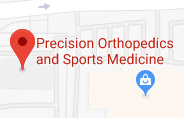Tendon injuries
Introduction
Tendons are the bands of fibrous connective tissue that connect muscles to bone. Tendons aid in the movement of the fingers, hand and all other body parts.
There are two types of tendons present in the hand: extensor tendons and flexor tendons. Extensor tendons, present on top of the hand, help with straightening the fingers. And flexor tendons, that lie on the palm side of the hand, help in bending the fingers. The flexor tendons are smooth, flexible, thick tissue strands which bend the fingers.
Any cut or laceration to the arm, hand, or fingers can cause a flexor tendon injury. Other possible causes include:
- Damage to the tendon from a sports injury, often associated with football, rugby, and wrestling
- Stretching of the tendon where the tendon is pulled off the bone
- Jersey finger: When a player’s finger catches on another player’s jersey or clothing
- Rheumatoid arthritis
- Adventurous activities such as rock climbing
Symptoms
Inform your doctor if you have any of the following symptoms:
- Recent cut to hand or fingers
- Pain
- Swelling
- Loss of ability to bend the finger
- Numbness (loss of sensation)
Diagnosis
Make sure to see a doctor when you sustain a finger injury that is affecting the flexion and extension of your fingers.
Your doctor will review your symptoms and medical history. A physical examination will be done, which includes a complete examination of both hands. During the exam, you will be asked to bend and straighten your fingers. Your fingers will also be checked for sensation, blood flow, and strength. An X-ray may be ordered to check for any damage to the surrounding bone.
Treatment
A ruptured tendon cannot heal without surgery because the cut ends usually pull away after an injury.
There are many options to repair a cut tendon; the type of repair depends on the type of cut. The aim of the procedure is to restore normal function of the joints and surrounding tissues following a tendon laceration.
The flexor tendon repair is usually an outpatient procedure and can be performed under local or general anesthesia. The surgeon makes an incision on the skin over the injured tendon. The damaged ends of the tendon are brought together with sutures to achieve a secure repair. If the tendon injury is severe, a graft may be required.
A graft is a piece of tendon that is derived from other parts of the body such as a foot or toe. After the re-positioning of the tendon, the incisions are closed with sutures and a dressing pad is placed over the surgical site. Your surgeon will place your hand in a protective splint to restrict movements.
Depending on the injury, you will be advised to start hand therapy for a few weeks following surgery. This is to improve the movement of the finger. Follow your surgeon’s specific instructions for a successful recovery.
Possible complications of surgery include pain, bleeding, infection, stiffness, rupture of the repair, and damage to the surrounding nerves or blood vessels. A second surgery may be needed to release any excess scar tissue that interferes with finger movement.
2120 N. MacArthur Blvd
Suite 100
Irving, TX 75061
 Ph: (972) 438 4636
Ph: (972) 438 4636
 Fax:
(972) 438 2077
Fax:
(972) 438 2077

 Make an Appointment Online
Make an Appointment Online

 Shoulder
Shoulder Elbow
Elbow Wrist
Wrist Hand
Hand Patient Education
Patient Education Testimonials
Testimonials Map
& Location
Map
& Location Patient Forms
Patient Forms






